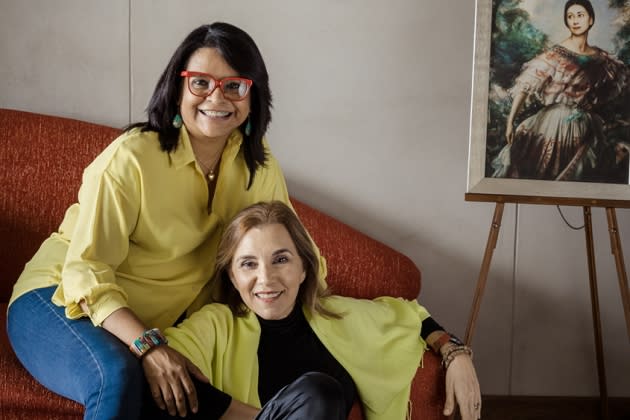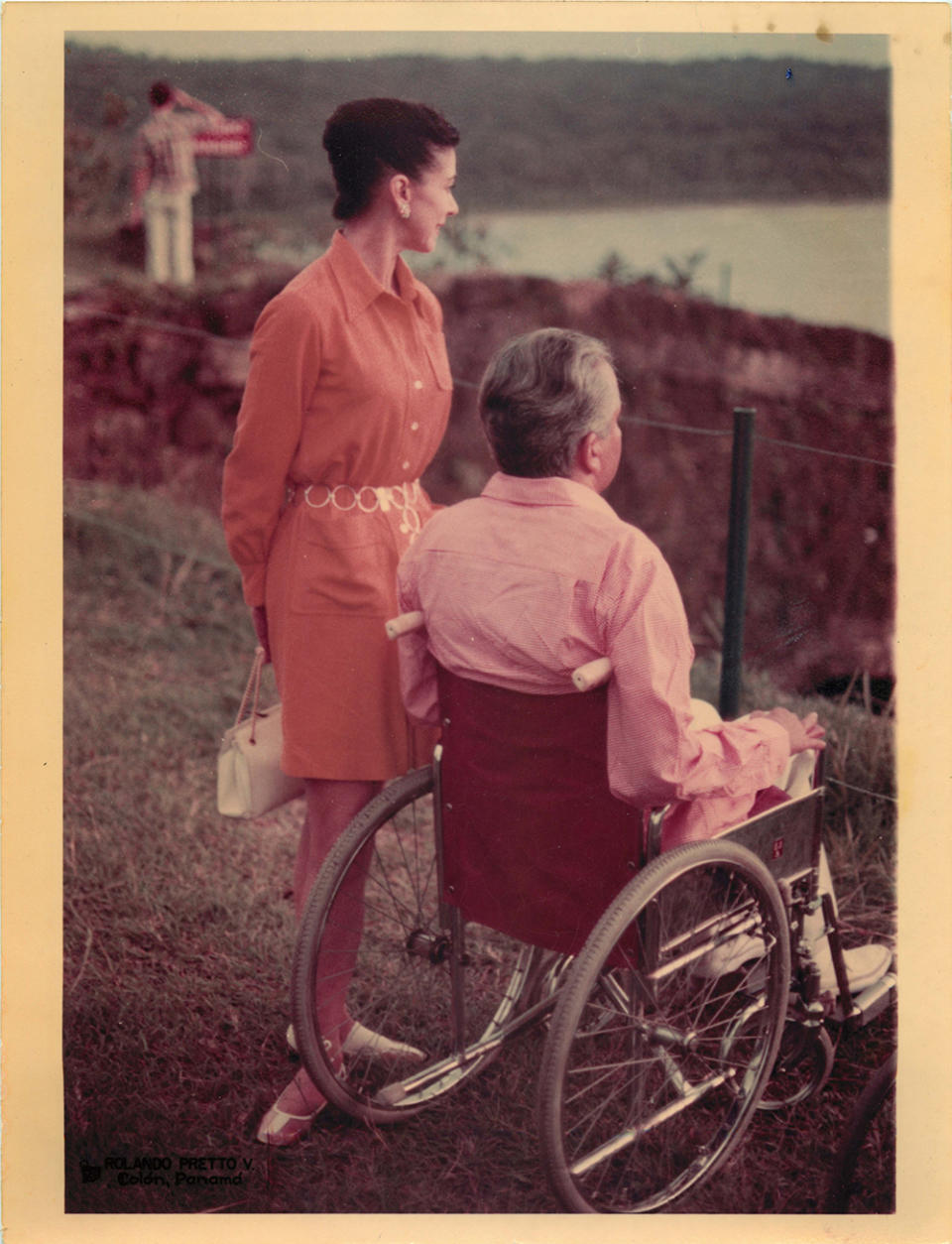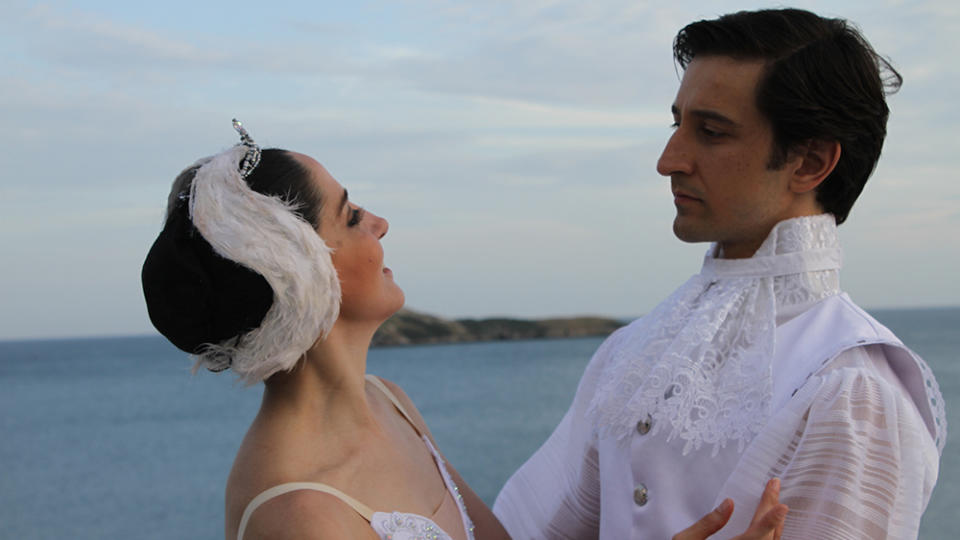Tito Arias, Dame Margot Fonteyn Doc ‘Tito, Margot and Me’ Directors Talk Grand Romance (EXCLUSIVE)

Directors Mercedes Arias and Delfina Vidal have reconvened to relay the fascinating tale of Panamanian politico Tito Arias – the director’s first cousin once removed – and his wife, renowned ballerina Dame Margot Fonteyn.
The directors, who previously achieved success with “Caja 25,” debuted the feature-length documentary “Tito, Margot and Me” globally at last week’s IFF Panama, the film being chosen as the closing-night selection.
More from Variety
IFF Panama Wraps on a High Note, as 'Nación de Titanes' Wins Audience Award
'Aftersun,' 'Argentina 1985,' 'Tito, Margot y Yo' Set to Screen at the Panama Festival
The project takes its time, with Arias helming interviews with family members and those close to the pair.
Written by Arias, Vidal and Joaneska Gröss (“La Matamoros”), the film uses found family footage, letters, old photographs and accounts from Fonteyn’s autobiography to cast an illuminating light on familial bonds, political duress and true love. Emotive dance sequences featuring ballerinas Maruja Herrera and Valentino Zucchetti assure a flawless segue between scenes.
“Tito, Margot and Me,” produced by Luis Pacheco’s Panama City-based Jaguar Films (“Causa Justa”), plumbs the larger-than-life love affair that captured the globe. Arias and Fonteyn, imperfect as they were dedicated, make for engrossing subjects. The careful direction ensures rumors and prior daily news fodder are met with a contrarian’s lens, allowing the viewer to take in the faults without seeing them as illicit.
After its Panama premiere, Arias and Vidal spoke with Variety about this enduring, unconventional love that outlived war, conspiracy and ill-health, and family connections lost and found.
Unlike some biographical documentaries, you’ve the privilege of creating the film from a familiar place. How do you think this differentiates the film from documentaries that cover a person, their story, solely from the outside looking in? Can you imagine the same story directed by someone else?
Arias: Looking inward can be intimidating, because sometimes it’s not until the creative process takes place that catharsis occurs. I had to look from the inside out… how I felt with certain truths, how I was affected by things we discovered in the process, curating the truth was personally important to me.
Today, we’re authorized to say that Tito worked for the British intelligence service and, from Paris, he also provided Panamanian passports to many Jews so that they could leave Europe, some of these are kept by his daughter Rosita. Certain facts had to be silenced, certain names we chose to mute.
About someone other than me co-directing it, I think the story of Tito, Margot and I, as we chose to tell it, would not have carried the same weight. My personal connection made me part of the history.
The film talks about the perpetual love between Tito and Margot, but it also highlights Margot’s grace under immense pressure. Is the film also an ode to a seemingly impenetrable woman?
Vidal: We chose to focus on showing her as she allowed us to know her in her autobiography, as an evolved, independent woman. Strong, a woman who gave everything for love and who reinvented herself at the age of 60, as a woman who preferred the simplicity of the countryside, the owner of La Quinta Pata farm, her paradise, where she was a swan in the middle of the cows, as she herself declared.
Margot wasn’t an impenetrable woman, she was emotionally human and she was only afraid of living too long, because that was worse than dying without her husband Tito, who was all she had.
At the end of the project, are you more aware of what constitutes a great romance? It feels like we’re straying further away from love in this world….

Vidal: The story of Tito and Margot was a great romance that had shadows and light, that sought the strength to rise above all circumstances. “Tito, Margot and Me” is a story that shows us forgiveness as a sublime form of love, that makes us reflect that love doesn’t seek its own interest, does not take into account the wrong received, but looks at the best of another person. The emotional and spiritual intelligence that Tito and Margot developed in their relationship is the key to being loved unconditionally.
Did reviewing your family history tell you anything about yourself? I feel that our curiosity about our lineage also serves us a bit, right? How did it feel to walk in the spaces they once occupied?
Arias: My father sent me home a box with 14 photo albums, I’m the eldest of four siblings, I keep that legacy with me. Reviewing it, I found that almost all those photos were of Christmas, walks to the beach, birthdays, all with cousins on my maternal side. Actually, my father’s inheritance wasn’t there. That distance occurs because, during the military dictatorship, many members of my paternal family went into exile. Tito and Margot are the first to return to Panama, but many cousins I still don’t know. We share DNA but we didn’t grow up together. Through the research process, wonderful reconciliations were made, which today certainly complete me.
The second part of the question, sometimes it felt unreal. Not just walking into the house on La Quinta Pata but, for example, when we opened the little doors of one of the bathroom cabinets, we saw Margot’s handwriting accounting for the towels, her books on the shelves and a huge tamarind tree that welcomed me, from which I took some seeds. When I danced on the beach splashing my legs with the foam, or when I danced on the stage of the National Theater of Panama with a wheelchair, where she also danced, I awkwardly tried to feel her in my movements and there I felt them both present.

Best of Variety
Sign up for Variety’s Newsletter. For the latest news, follow us on Facebook, Twitter, and Instagram.


